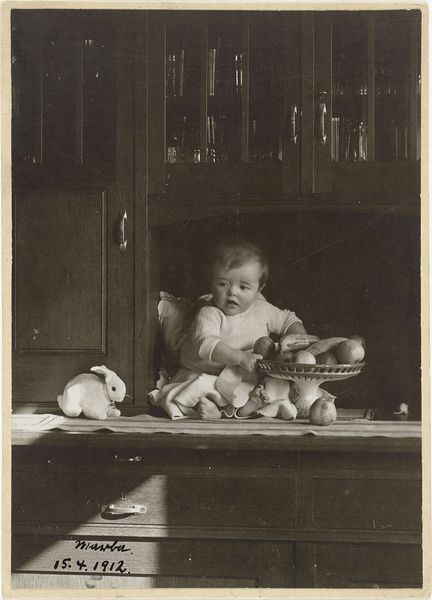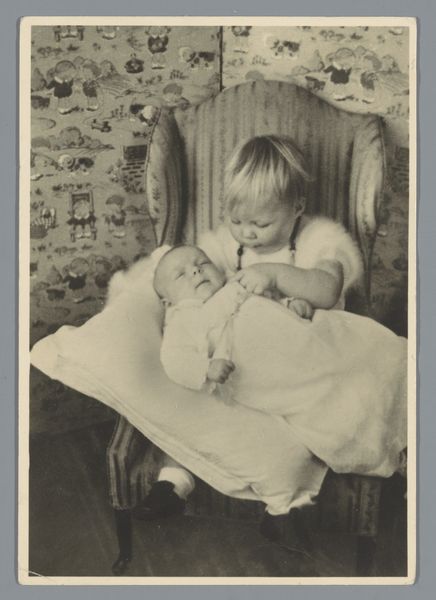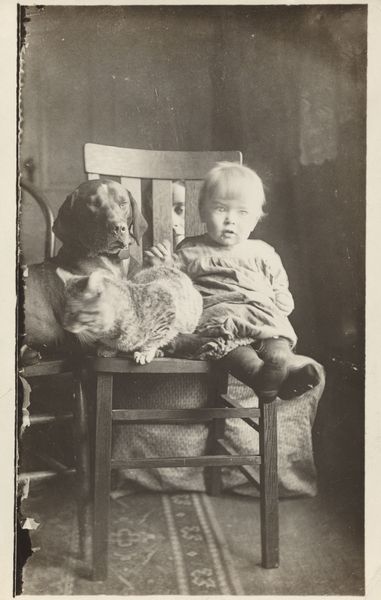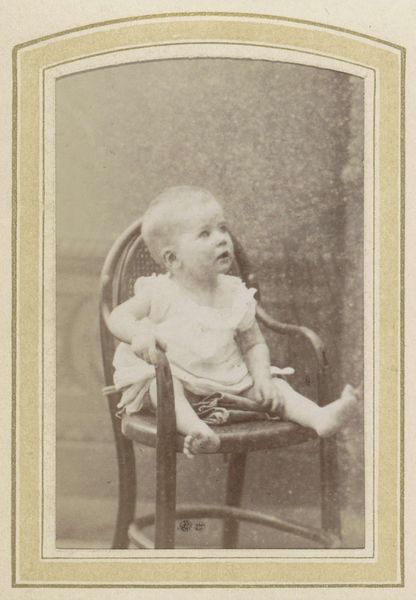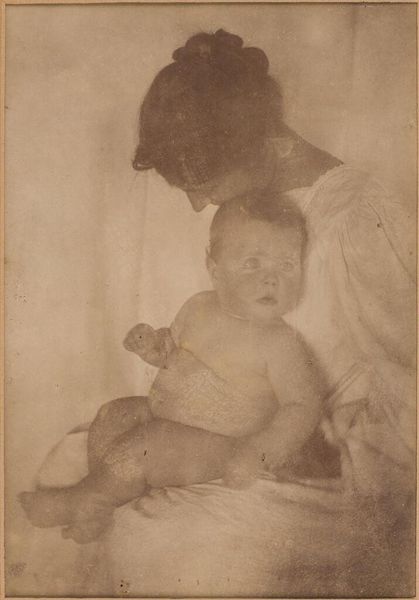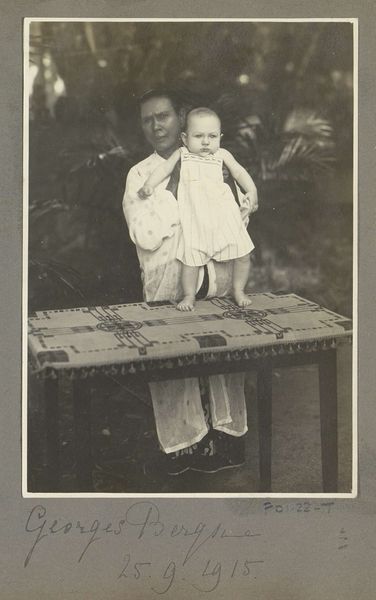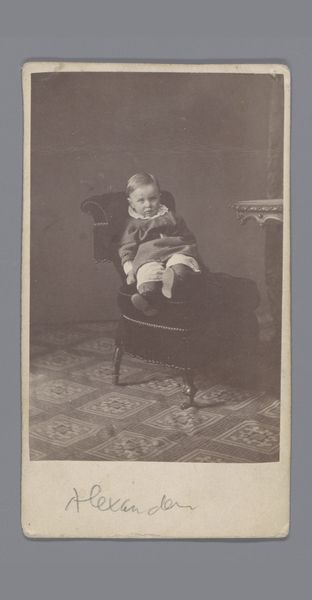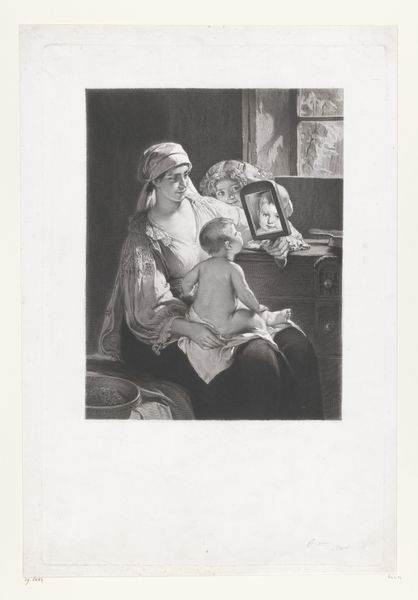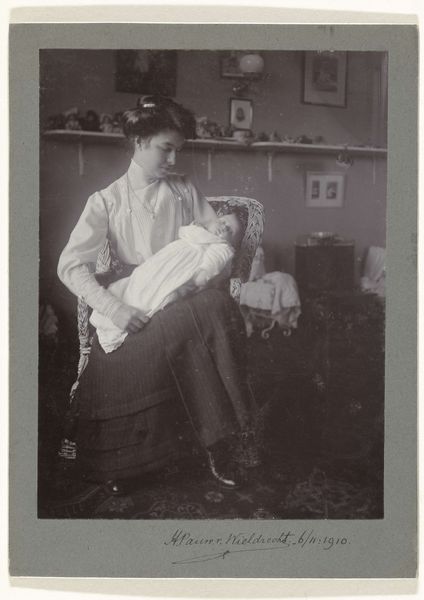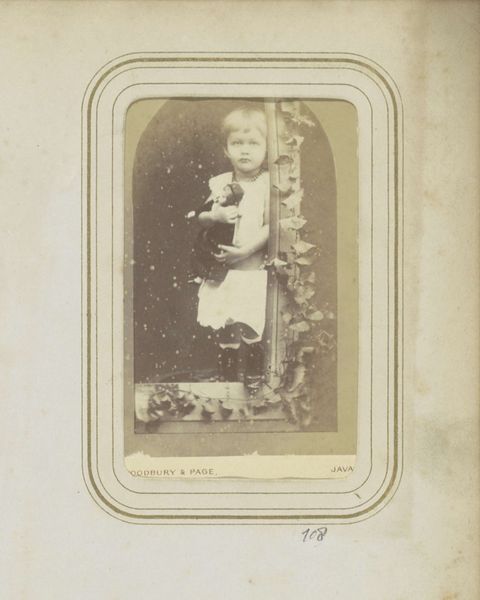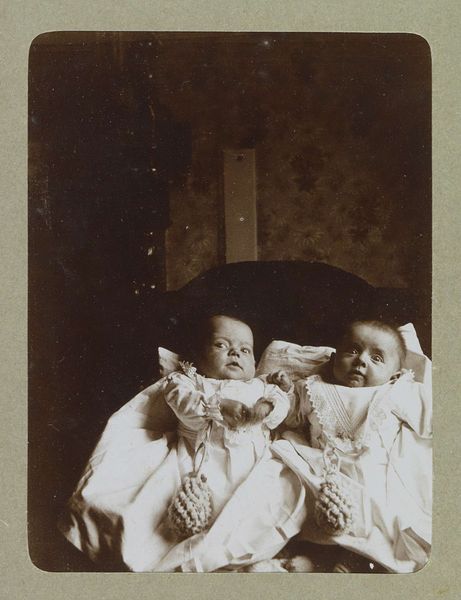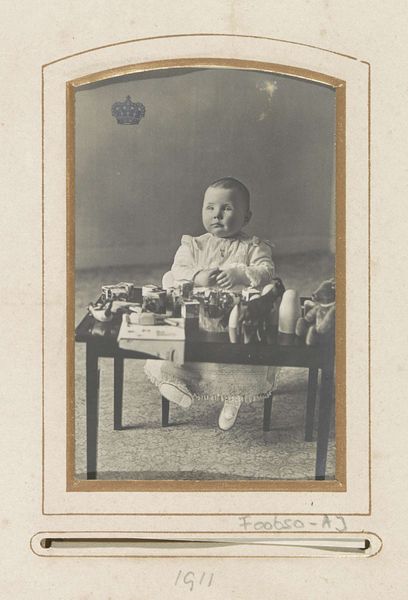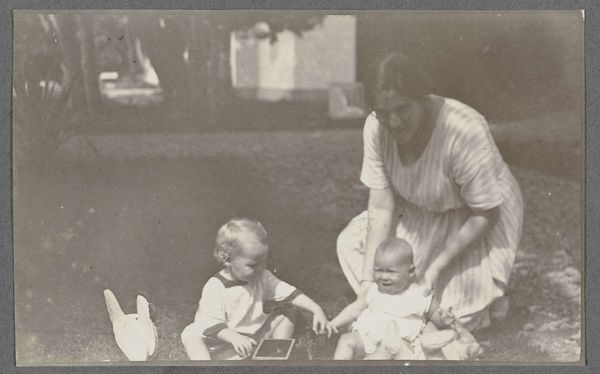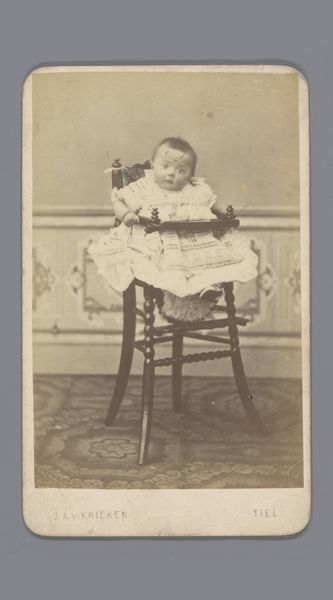
Marba Titzenthaler, dochter van de fotograaf, in het woonhuis in de Friedrichstrasse, Berlijn Possibly 1912 - 1915
0:00
0:00
Dimensions: height 158 mm, width 110 mm, height 163 mm, width 114 mm
Copyright: Rijks Museum: Open Domain
Curator: Right now, we are looking at Waldemar Titzenthaler’s gelatin silver print, probably taken between 1912 and 1915, entitled, "Marba Titzenthaler, daughter of the photographer, in the house in the Friedrichstrasse, Berlin". Editor: Oh, what a charmer! This photograph exudes such warmth, a snapshot of pure, unadulterated joy. You just know she's about to grab for that apple! Curator: The photograph has this remarkable depth—note how the strong horizontals and verticals give a rigid framing to contain that moment. The cabinet doors, the shelf edges, all converge on little Marba and her still life of fruit. It’s quite geometric, wouldn’t you say? Editor: Geometric, perhaps, but I feel it more as a caress, honestly. Titzenthaler hasn’t just captured an image; he has bottled up a memory. It reminds me that photography has this magical power of transporting you back. What would it have felt like in the house that day? It seems so intimate... Curator: Intimacy and context were actually fairly novel to photography at that time. See how Titzenthaler subtly contrasts textures through lighting? The reflective glassware behind her, for example, catches the available light, acting almost like a soft halo against the darkness. This draws our focus intently upon the baby. It's sophisticated formalism that highlights an unaffected realism. Editor: Absolutely, and in that moment, it ceases to be formalism, and transcends into pure human feeling. Those chubby fingers, that unrestrained laughter—it dissolves all academic considerations. I guess he made sure he had those photos ready before she began flinging fruit everywhere! Curator: Perhaps! The casual composition also tells a story of access, literally a child playing in a domestic scene. Consider its texture, light, and the inherent tension it builds into what otherwise could be a simple snapshot. Titzenthaler clearly wanted more for this image than mere documentation. Editor: In a way, the image becomes a relic now; Marba’s joy has managed to last over a hundred years through an image both precious and fleeting. Isn't art wonderful? Curator: It certainly can be. In “Marba Titzenthaler” we see photography acting as not only preservation, but also participation. The fruit, the smile, even that shadowed corner each help invite us in.
Comments
No comments
Be the first to comment and join the conversation on the ultimate creative platform.
